Oxidative activation of Ca(2+)/calmodulin-activated kinase II mediates ER stress-induced cardiac dysfunction and apoptosis
- PMID: 23316062
- PMCID: PMC3602775
- DOI: 10.1152/ajpheart.00752.2012
Oxidative activation of Ca(2+)/calmodulin-activated kinase II mediates ER stress-induced cardiac dysfunction and apoptosis
Abstract
Endoplasmic reticulum (ER) stress elicits oxidative stress and intracellular Ca(2+) derangement via activation of Ca(2+)/calmodulin-dependent protein kinase II (CaMKII). This study was designed to examine the role of CaMKII in ER stress-induced cardiac dysfunction and apoptosis as well as the effect of antioxidant catalase. Wild-type FVB and transgenic mice with cardiac-specific overexpression of catalase were challenged with the ER stress inducer tunicamycin (3 mg/kg ip for 48 h). Presence of ER stress was verified using the ER stress protein markers immunoglobulin binding protein (BiP) and C/EBP homologous protein (CHOP), the effect of which was unaffected by catalase overexpression. Echocardiographic assessment revealed that tunicamycin elicited cardiac remodeling (enlarged end-systolic diameter without affecting diastolic and ventricular wall thickness), depressed fractional shortening, ejection fraction, and cardiomyocyte contractile capacity, intracellular Ca(2+) mishandling, accumulation of reactive oxygen species (superoxide production and NADPH oxidase p47phox level), CaMKII oxidation, and apoptosis (evidenced by Bax, Bcl-2/Bax ratio, and TUNEL staining), the effects of which were obliterated by catalase. Interestingly, tunicamycin-induced cardiomyocyte mechanical anomalies and cell death were ablated by the CaMKII inhibitor KN93, in a manner reminiscent of catalase. These data favored a permissive role of oxidative stress and CaMKII activation in ER stress-induced cardiac dysfunction and cell death. Our data further revealed the therapeutic potential of antioxidant or CaMKII inhibition in cardiac pathological conditions associated with ER stress. This research shows for the first time that contractile dysfunction caused by ER stress is a result of the oxidative activation of the CaMKII pathway.
Figures
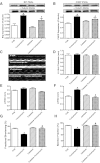

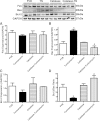

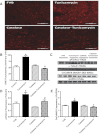
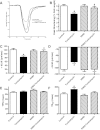

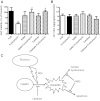
Similar articles
-
CaMKII is a nodal signal for multiple programmed cell death pathways in heart.J Mol Cell Cardiol. 2017 Feb;103:102-109. doi: 10.1016/j.yjmcc.2016.12.007. Epub 2016 Dec 24. J Mol Cell Cardiol. 2017. PMID: 28025046 Free PMC article. Review.
-
Antioxidant metallothionein alleviates endoplasmic reticulum stress-induced myocardial apoptosis and contractile dysfunction.Free Radic Res. 2015 Oct;49(10):1187-98. doi: 10.3109/10715762.2015.1013952. Free Radic Res. 2015. PMID: 25968954
-
Activation of Akt rescues endoplasmic reticulum stress-impaired murine cardiac contractile function via glycogen synthase kinase-3β-mediated suppression of mitochondrial permeation pore opening.Antioxid Redox Signal. 2011 Nov 1;15(9):2407-24. doi: 10.1089/ars.2010.3751. Epub 2011 Jun 24. Antioxid Redox Signal. 2011. Retraction in: Antioxid Redox Signal. 2023 Jun;38(16-18):1214. doi: 10.1089/ars.2010.3751.retract. PMID: 21542787 Free PMC article. Retracted.
-
Calcium/Calmodulin Protein Kinase II-Dependent Ryanodine Receptor Phosphorylation Mediates Cardiac Contractile Dysfunction Associated With Sepsis.Crit Care Med. 2017 Apr;45(4):e399-e408. doi: 10.1097/CCM.0000000000002101. Crit Care Med. 2017. PMID: 27648519
-
Role of oxidants on calcium and sodium movement in healthy and diseased cardiac myocytes.Free Radic Biol Med. 2013 Oct;63:338-49. doi: 10.1016/j.freeradbiomed.2013.05.035. Epub 2013 Jun 1. Free Radic Biol Med. 2013. PMID: 23732518 Review.
Cited by
-
CaMKII-δ9 Induces Cardiomyocyte Death to Promote Cardiomyopathy and Heart Failure.Front Cardiovasc Med. 2022 Jan 20;8:820416. doi: 10.3389/fcvm.2021.820416. eCollection 2021. Front Cardiovasc Med. 2022. PMID: 35127874 Free PMC article.
-
Protein Kinase Signaling at the Crossroads of Myocyte Life and Death in Ischemic Heart Disease.Drug Discov Today Ther Strateg. 2012;9(4):e173-e182. doi: 10.1016/j.ddstr.2013.12.001. Drug Discov Today Ther Strateg. 2012. PMID: 24839450 Free PMC article.
-
CaMKII is a nodal signal for multiple programmed cell death pathways in heart.J Mol Cell Cardiol. 2017 Feb;103:102-109. doi: 10.1016/j.yjmcc.2016.12.007. Epub 2016 Dec 24. J Mol Cell Cardiol. 2017. PMID: 28025046 Free PMC article. Review.
-
Modulation of P2X4/P2X7/Pannexin-1 sensitivity to extracellular ATP via Ivermectin induces a non-apoptotic and inflammatory form of cancer cell death.Sci Rep. 2015 Nov 10;5:16222. doi: 10.1038/srep16222. Sci Rep. 2015. PMID: 26552848 Free PMC article.
-
Ca2+/Calmodulin-Dependent Protein Kinase II Regulation by RIPK3 Alleviates Necroptosis in Transverse Arch Constriction-Induced Heart Failure.Front Cardiovasc Med. 2022 Apr 28;9:847362. doi: 10.3389/fcvm.2022.847362. eCollection 2022. Front Cardiovasc Med. 2022. PMID: 35571197 Free PMC article.
References
Publication types
MeSH terms
Substances
Grants and funding
LinkOut - more resources
Full Text Sources
Other Literature Sources
Molecular Biology Databases
Research Materials
Miscellaneous

